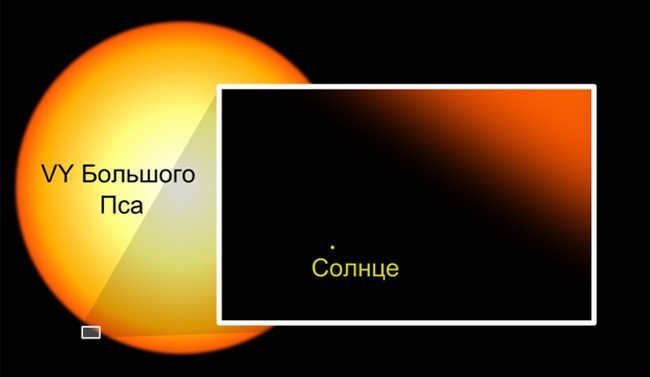


The nearest star to Earth is Proxima Centauri. In the past and future, there have been and will be other stars that are close to Earth. There is a list of stars that are closest to Earth. What star is the closest to Earth? Many people immediately think of Alpha Centauri, Sirius, or even Polaris. It is only after thinking about it that they realize that the Sun is the closest star to Earth.
It is more accurate to ask about the nearest star to the Sun, as the Earth revolves around it. However, on a cosmic scale, this is not as important.
So, what star is the nearest to our Sun? Historically, it has been widely accepted that the closest star to the Sun is Alpha Centauri, positioned in the southern hemisphere of the celestial sphere. This star is approximately 4.37 light years away. However, in the year 1915, another star called Proxima Centauri was discovered in close proximity to Alpha Centauri, and it is highly likely that it is part of the Alpha Centauri system. As a result, it can be concluded that the Alpha Centauri system, along with all its constituents, is the nearest star system to our planet. For more detailed information, continue reading.
Closest star to Earth
The largest star in the Alpha Centauri system is called Alpha Centauri A. There is also another star nearby called Alpha Centauri B, which is slightly smaller in size. These two stars orbit around a common center of mass, causing them to take turns being the closest star to Earth. However, there is another star in this system called Proxima Centauri, which is a small red dwarf. Despite the complex trajectories of these three stars in relation to each other, Proxima Centauri is currently the closest star to Earth.
Proxima Centauri
Proxima Centauri is categorized as a red dwarf and has an apparent stellar magnitude of 11.05m. However, its absolute stellar magnitude measures a mere 15.49m. Consequently, even from Alpha Centauri, Proxima Centauri appears as a faint star with a magnitude of approximately 5th. The distance separating the Sun and Proxima Centauri spans 4.22 light years.

It is believed that Proxima Centauri revolves around the Alpha Centauri system every 500,000 years. Therefore, some refer to Proxima Centauri as Alpha Centauri C, making it the third component of the Alpha Centauri star system. Proxima Centauri’s orbit around Alpha Centauri has a radius of approximately 15,000 ± 700 a.u., which is equivalent to around 0.21 light-years. In comparison, the distance from Proxima Centauri to the Sun is just 20 times greater than this.
Through the utilization of the Hubble telescope, a comprehensive examination was conducted on the region surrounding Proxima Centauri, ultimately revealing the absence of red dwarfs within its orbit. Furthermore, no super-Earths, which are planets slightly larger than Earth, were detected within the habitable belt. Nevertheless, on August 24, 2020, the European Southern Observatory officially substantiated the presence of a planet resembling Earth in the habitable zone of Proxima Centauri. This newly discovered celestial body has been designated the moniker “Proxima Centauri b.”
The question of whether life can exist on the planet Proxima Centauri b is a matter of controversy. Although the planet is located in the habitable zone, which is already fortunate considering the narrowness of such a zone around a small star, Proxima Centauri is a star that experiences periodic flares. These flares result in a significant increase in not only normal radiation but also X-rays. This poses a major concern for living organisms, similar to the impact it would have on protein-based life on Earth.
The second planet in the nearest star to our Sun, Proxima Centauri.
Proxima Centauri was discovered a considerable amount of time ago utilizing the conventional technique of observing the motion of the light beam from the rotation. Additionally, shortly after, a planet revolving around this star was also found and given the name Proxima b.
Astronomers from the Breakthrough Initiatives have recently announced that they may have detected another planet in close proximity to Proxima Centauri, the nearest star to our Sun. According to a report from Scientific American, this newly found planet has been named Proxima c and falls into the category of super-Earths.
Astronomers have discovered a potential planet that is six times more massive than Earth and orbits a star in 1900 days. The distance from Proxima b to Proxima Centauri is approximately 1.5 times the distance from Earth to the Sun, making it too far for the planet to be habitable.
Using the same method of light observation, experts have found that the planet Proxima b displays varying intensity and duration of light, suggesting the existence of a second planet orbiting Proxima Centauri. This potential discovery would be significant, as NASA’s team of specialists continues their mission to find an exoplanet that could support life or have suitable conditions for its development.
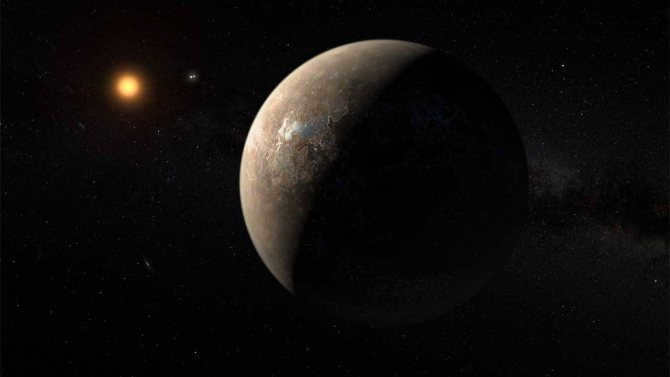
The planet’s mass is six times that of Earth.
For instance, Proxima b, despite its similarity to Earth, lacks the necessary conditions for life to originate, primarily because it orbits its host star one and a half times faster than Earth. Additionally, the distance of 4.2 light-years also reduces the likelihood of detecting any form of amino acid life there.
However, the hypothetical second exoplanet Proxima c may potentially be the super-Earth capable of supporting life as we know it. Nonetheless, ongoing observations of the parent star Proxima Centauri have piqued the interest of experts who are eager to conduct additional computer simulations and calculations to explore the potential existence of a second exoplanet.
Should the existence of this celestial body be confirmed, it would be designated as the second planet discovered in close proximity to Proxima Centauri.
Did you come across a typographical error? Highlight the fragment and press Ctrl+Enter.
Tags: astronomy, physics, NASA, Earth, planet, solar system, Sun
Previous article: Is warp drive for interstellar travel just science fiction or is it a reality?
Next article: Let’s talk about the magnificent night sky
The nearest stars to Earth in the past and future
Stars are constantly in motion, although this is not noticeable even within a single human lifetime. Has Proxima Centauri always been the closest star to the Sun, and how long will it remain so?
For the past 32,000 years, Proxima Centauri has held the title of being the nearest star to the Sun, and it will continue to do so for quite some time. However, in approximately 33,000 years, Ross 248, a solitary star located in the constellation Andromeda, will take over as the closest star to our Sun. At present, Ross 248 is situated 10.3 light-years away from the Sun, which is 2.5 times greater than the current distance to Proxima Centauri.
Distances to stars
Heading: Observer’s Calendar Posted 07/19/2017 – Comments: 0 – To Read: 4 min – Views: Post Views: 7,560
Regardless of how much we peer into the night sky, basic observations won’t provide us with the answer to this question. It’s clear that the stars are situated at a great distance – farther than both the sun and the moon (which often obscures our view of the stars), and most likely farther than all the planets. But just how vast is their distance?
Nicolaus Copernicus was the pioneer in implementing this reasoning. As we are aware, Copernicus formulated a hypothesis that positioned the Sun, rather than the Earth, as the focal point of the universe. This assumption not only facilitated the simplification of the planetary motion theory but also provided an explanation for some of the peculiarities in their behavior. According to Copernicus, the Earth also orbited around the Sun – in a broad trajectory with a duration of one year. Consequently, the stars should have exhibited varying angles when observed during different seasons, such as spring and fall, when the Earth is situated at opposite points in its orbit.
Copernicus attempted to detect these variations – the parallaxes of the stars – by observing the altitudes of a select few stars throughout the year. However, no shifts were observed in the stars. Evidently, they were situated too far away for their parallaxes to be discernible with the naked eye.
Despite the invention of the telescope, astronomers were still unable to resolve this question. The small parallaxes posed significant challenges that the astronomers of the 17th and 18th centuries were unable to overcome. It wasn’t until approximately two hundred years ago, with the development of precise observational techniques, that the first parallaxes were successfully measured. These measurements revealed that the stars were astonishingly distant, much farther away than any pessimistic calculations had suggested. Consider this – even light, which can travel from Earth to the Moon in less than one and a half seconds, takes years to travel from the stars to Earth! The vastness of these distances is truly unimaginable!
However, even among the stars, there are some that are closer to us than others, as well as some that are farther away.
Also, don’t miss out on the opportunity to read “Myths and Legends of Constellations” by Bonov Angel Damyanov online! You can find it on RuLit, specifically on Page 46.
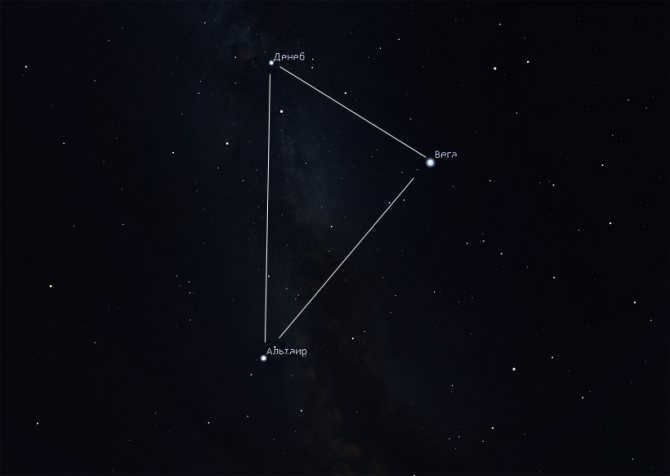
Vega, Altair, and Deneb are three stars that form the summer triangle. Although they all have a similar brightness, they are located at different distances from us. This can be seen in the figure provided by Stellarium.
Deneb, the dimmest star in the Summer Triangle, is positioned at the upper left corner. Its distance is so vast that it cannot be measured using traditional methods due to the large margin of error. Astronomers have therefore developed special indirect methods for determining distances to such faraway celestial objects. While these methods may not be as precise when measuring short distances, they prove to be effective when estimating distances of thousands of light-years.
It has been discovered that the distance to Deneb is 2,750 light years, making it 160 times farther away from us than Altair and 110 times farther away than Vega!
When comparing the Sun (depicted as a yellow circle) to the blue supergiant star Deneb, it becomes evident just how vast the difference in distance is. (Figure: The Big Universe)
Deneb is an incredibly unique star. If Vega or Altair were in its place, they would be completely invisible to the naked eye. However, Deneb is observed with great clarity, despite having less than half the luminosity of Altair. The brightness of Deneb is truly extraordinary. In fact, Deneb has an absolutely astonishing luminosity – only 196,000 suns would emit as much radiation as this bluish-white star! Take a look at the night sky: you won’t find stars with a higher luminosity. None of the stars visible to the naked eye (with the possible exception of Rigel) shine as brilliantly as Deneb.
All of these astonishing facts about stars have been revealed solely due to our ability to measure distances in outer space. However, astronomers are not stopping there: the European Space Telescope is currently in operation, with the Gaia mission aiming to gather parallax data for over a billion stars with unparalleled precision. In the coming years, Gaia’s data will enable more accurate calculations of the distance to Deneb and even more distant stars. This will allow astronomers to create the first-ever three-dimensional map of the Milky Way galaxy.
Post Views: 7,560
Tags: Stars
Regardless of how much we peer into the dark night sky, basic observations won’t provide us with an answer. It is evident that the stars are located at a great distance – they are further away than the sun and moon (which often obscure the stars), and most likely, they are even farther away than all the planets. However, the question remains, just how far away are they?
Nicolaus Copernicus was the original astronomer to apply this concept in practical terms. As we are aware, Copernicus formulated a theory that positioned the Sun, instead of the Earth, at the center of the universe. This assumption aided in simplifying the explanation of planetary motion and also accounted for some of the peculiarities in their behavior. In accordance with Copernicus, the Earth also orbits around the Sun, in a wide path that takes one year to complete. Consequently, in different seasons like spring and autumn, when the Earth is at opposite ends of its orbit, the stars would appear at varying angles.
Copernicus attempted to observe these changes – the parallaxes of the stars – by measuring the heights of a specific group of stars throughout the year. However, the stars did not exhibit any movement. Evidently, they were too distant for their parallaxes to be discerned with the naked eye.
However, within the vast expanse of the universe, there exists a range of distances between the stars and ourselves. Some stars appear relatively close, while others are much farther away.
Take, for instance, the stars that form the prominent pattern in the summer sky. Two of these stars, Vega and Altair, are among the closer stars to our own. It would take approximately 25 years for light to travel from Vega to Earth, covering a staggering distance of 240 trillion kilometers. Altair, on the other hand, is even closer, ranking as one of the hundred nearest stars to our Sun. Its distance is measured at 17 light-years.
Vega, Altair, and Deneb make up the three stars of the summer triangle, each possessing a similar brilliance but existing at varying distances from our perspective. (Image: Stellarium)
It has been determined that the distance to Deneb is 2750 light years. This celestial body is 160 times more distant – 160 times farther away than Altair and 110 times farther away than Vega.

In the Big Universe figure, a comparison is made between the Sun, depicted as a yellow circle, and the blue supergiant star Deneb.
Deneb is an incredibly unique star. If Vega and Altair were in its position, they would be completely invisible to the naked eye. However, Deneb is easily observable, shining with less than half the luminosity of Altair. The brightness of Deneb is truly extraordinary. In fact, Deneb has an absolutely astonishing luminosity – only 196,000 suns would emit as much radiation as this bluish-white star! Take a look at the night sky: you won’t find any stars with higher luminosity. With the exception of Rigel, none of the stars visible to the naked eye shine as intensely as Deneb.
All these astonishing facts about stars have been discovered thanks to our ability to measure distances in space. However, astronomers are not stopping there: the European Space Telescope, Gaia, is currently operating in space. Gaia aims to gather parallax data from over a billion stars with unparalleled accuracy. In the coming years, the data collected by Gaia will help us determine the distance to Deneb and even more remote stars with greater precision. This will enable astronomers to create the first ever three-dimensional map of the Galaxy.
In May 2015, the Hubble telescope observed an outburst from the farthest and therefore oldest galaxy known to date. It took the light from this event a staggering 13.1 billion light-years to reach Earth and be detected by our instruments. According to scientists’ estimations, this galaxy was formed approximately 690 million years after the occurrence of the Big Bang.
It might be assumed that the distance to the galaxy EGS-zs8-1 (which is the sophisticated name given to it by scientists) is equal to the distance that light has traveled in 13.1 billion years, considering that the light from this galaxy has been traveling to reach us for the same period of time.
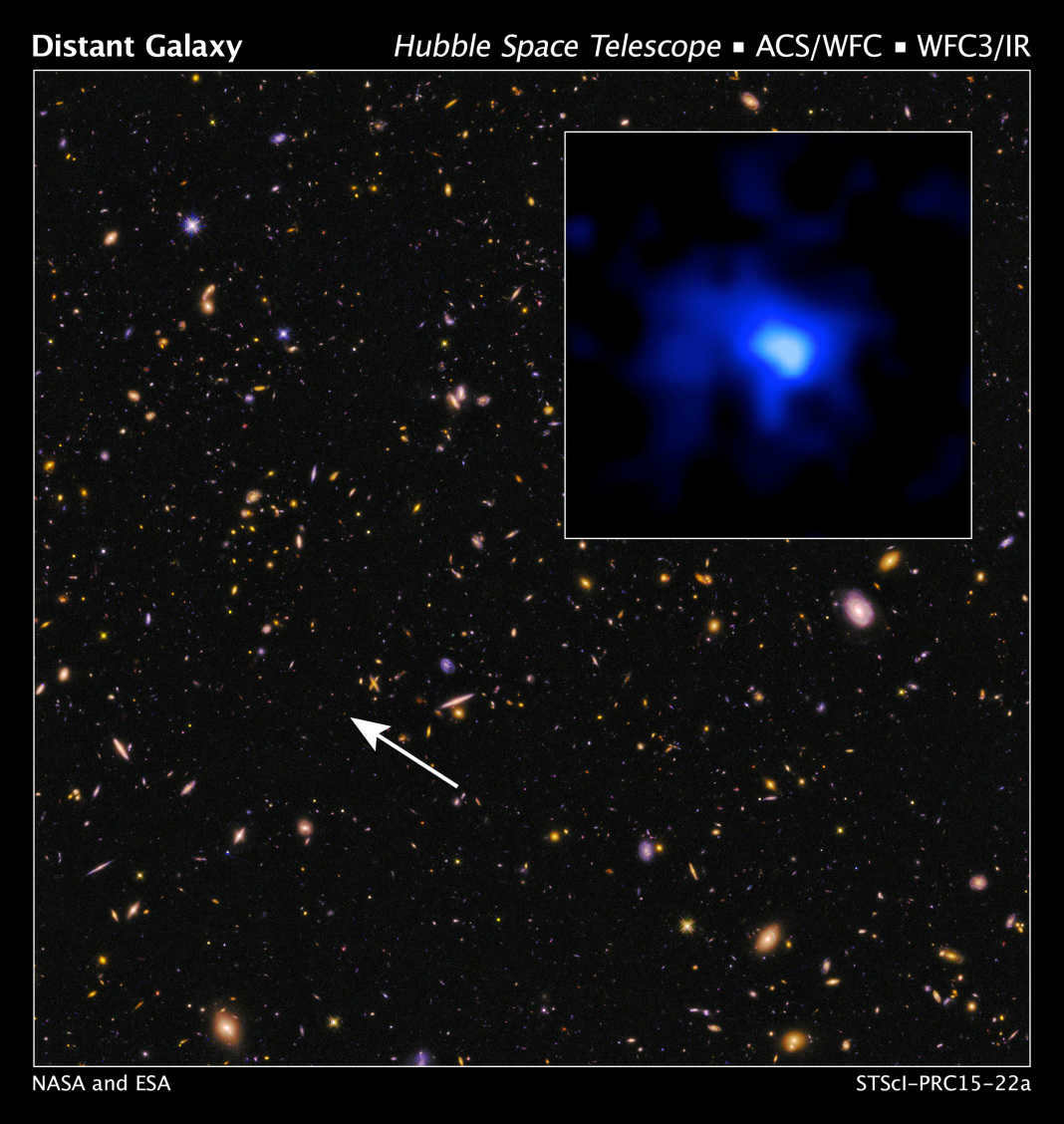
The galaxy EGS-zs8-1 holds the record for being the farthest galaxy ever discovered.
However, it is important to consider certain aspects of our universe’s structure that can significantly impact distance calculations. One crucial factor is the expansion of the universe, which is happening at an accelerated rate. This means that while light was traveling for 13.1 billion years to reach our planet, space was continuously expanding, causing the galaxy to move away from us at an increasingly faster pace. The figure below provides a visualization of this process.
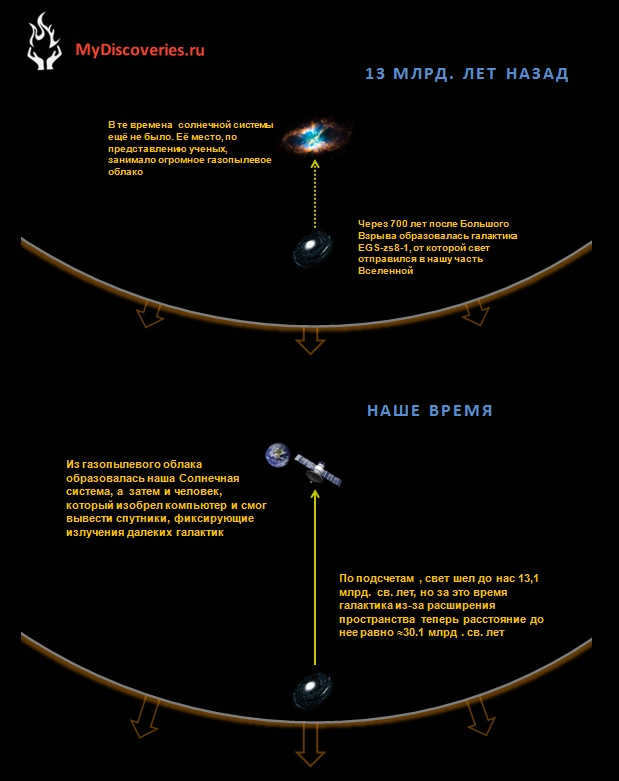
Considering the expansion of the universe, the most remote galaxy known as EGS-zs8-1 is presently situated approximately 30.1 billion light-years away from our location, setting a new benchmark surpassing all other celestial entities of its kind. It is intriguing to note that as time progresses, we will continue to detect increasingly distant galaxies whose light has not yet reached our planet. It is quite certain that the distance record held by the galaxy EGS-zs8-1 will eventually be surpassed in the future.
Here’s something fascinating: there is often a misconception about the universe’s size. It is often compared to its age, which is 13.79 billion years. However, this overlooks the fact that the universe is expanding at an accelerating rate. Rough estimates suggest that the visible universe has a diameter of 93 billion light years. Yet, there is also an invisible part of the universe that will forever remain unseen. Learn more about the size of the universe and the existence of invisible galaxies in the article “”””.
If you come across any errors, please highlight the text and press Ctrl+Enter.
Other celestial bodies and planets. By observing the celestial sphere, astronomers were able to deduce that as the Moon traverses the sky, it occasionally obscures certain stars, while the stars themselves never come between us and other celestial bodies. On occasion, planets can also block the stars. This implies that the stars are located farther away from us than the planets.
But how much farther? Even in ancient times, astronomers noted that the stars are incredibly distant from Earth, and as a result, we are unable to perceive any noticeable shifts in their positions. However, these shifts must inevitably occur due to the Earth’s movement in conjunction with the stars within the vast expanse of space.
Astronomers were unable to detect such star movements until about three centuries later. Despite significant advancements in the development of sky observation instruments and the accuracy of observations during this time period. In the 18th century, renowned scientists Bradley in England and Lambert in Germany discovered that the distances to the nearest stars are considerably greater than the distances from Earth. However, they were never able to accurately determine the exact distances to these stars.
For the very first time throughout the annals of scientific research, V. Я. Struve undertook the task of measuring. He conducted multiple measurements of the positions of Vega and deduced that Vega undergoes a shift of approximately 1/4 second of arc over a span of six months. At such a minuscule angle, it becomes possible to perceive the diameter of the Earth’s orbit, or in other words, the twofold distance between the Earth and the Sun, from the vantage point of Vega. Moreover, this distance can be observed at an angle of 1/8th of a second of arc.
It is a well-known fact that the circumference of a circle is divided into 360 degrees, with 60 angular minutes contained within each degree, and 60 seconds constituting a single minute. Consequently, there are a total of 1,296,000 angular seconds encircling the entirety of the circle.
If the radius of Earth’s orbit from Vega is observed at an angle of roughly 1/8th of a second, or to be more precise, 1/10000000th of the entire circle (referred to by astronomers as the parallax of this star), then the distance to this star amounts to an astounding 250 trillion kilometers.
A different method is used by astronomers to measure distances to stars. In this system, if a circle contains 1296000 angular seconds, then a radian is equivalent to 206,265 angular seconds (57°,3). If the radius of Earth’s orbit were visible from a celestial body at an angle of 1 circle second, it would indicate that the distance to that body is 206,265 times the radius of Earth’s orbit, which is approximately 31 trillion kilometers or 374 light-years. This measurement is known as a parallax second or parsec.
Vega is located 8 parsecs away from us, which is equivalent to 26.5 light-years. It would take a TU-154 airplane forty million years to cover that distance.
Vega is certainly one of the stars that is relatively near to us, although it is not the nearest. The closest bright star to us is Alpha, located in the Centauri constellation, but unfortunately it cannot be seen from Russia. However, it is visible in southern countries. The light from Alpha reaches us after traveling for 4.3 years.
Up until now, this technique has been used to determine the distances to numerous stars.
However, despite the impressive precision achieved by astronomers in determining stellar parallaxes, this method is only effective for calculating distances to stars that are relatively close. It is not applicable to stars that are hundreds, thousands, or tens of thousands of light years away from us, as the angles involved are so minuscule (measured in hundredths or thousandths of a second) that they cannot be accurately measured. Fortunately, astronomers have discovered other reliable methods for measuring the distances of more distant stars. As a result, we now know the exact distances to tens of thousands of individual stars, and for even more stars, approximate distances can be determined.
If we can observe stars from unimaginably vast distances, it stands to reason that they must possess tremendous luminosity. These stars are essentially distant suns, many of which emit significantly more light than our own massive sun.
When envisioning far-off stars, we typically consider distances of tens, hundreds, or even thousands of light-years. Each of these celestial bodies resides within our own galaxy, the Milky Way. Advanced telescopes have the ability to discern stars within neighboring galaxies, which are located tens of millions of light-years away. However, what are the limits of observational technology, particularly when nature lends a helping hand? The remarkable recent detection of Icarus, the farthest star known in the Universe at present, showcases the potential for observing extraordinarily distant cosmic phenomena.
Nature’s Assistance
There exists a phenomenon that enables astronomers to observe the most distant objects in the Universe. This phenomenon is a result of the general theory of relativity and is connected to the bending of light in a gravitational field.
The phenomenon of lensing occurs when there is a massive object between the observer and the source of light. The gravitational field of this object causes the light beam to bend, resulting in a distorted or multiple image of the source. Technically, all rays are deflected in the gravitational field of any object, but the most significant effect is observed in the most massive structures in the Universe, such as clusters of galaxies.
When a small celestial object, like a lone star, functions as a lens, it is incredibly difficult to notice any visual distortion of the source, but its brightness can experience a significant boost. This occurrence is known as microlensing. Both forms of gravitational lensing played a part in the narrative surrounding the identification of the most distant star from our planet.
The identification of Icarus was made possible by a fortuitous occurrence. Scientists were studying a remote MACS J1149.5+2223, situated approximately five billion light-years away. This galaxy is particularly intriguing as it acts as a gravitational lens, altering the path of light rays and causing them to traverse varying distances before reaching the observer. Consequently, the different components of the lensed image of the light source will experience a time delay.
In 2015, scientists eagerly anticipated the expected re-flare of a Refsdal supernova located in a distant galaxy, a phenomenon that takes a staggering 9.34 billion years for its light to reach Earth. As predicted, the event did occur. However, upon examining the images captured by the Hubble telescope in 2016-2017, researchers made an equally intriguing discovery: the presence of a star from the same far-off galaxy. Through careful analysis of its luminosity, they determined that this celestial object was not a supernova nor a gamma-ray burst, but a rather ordinary star.
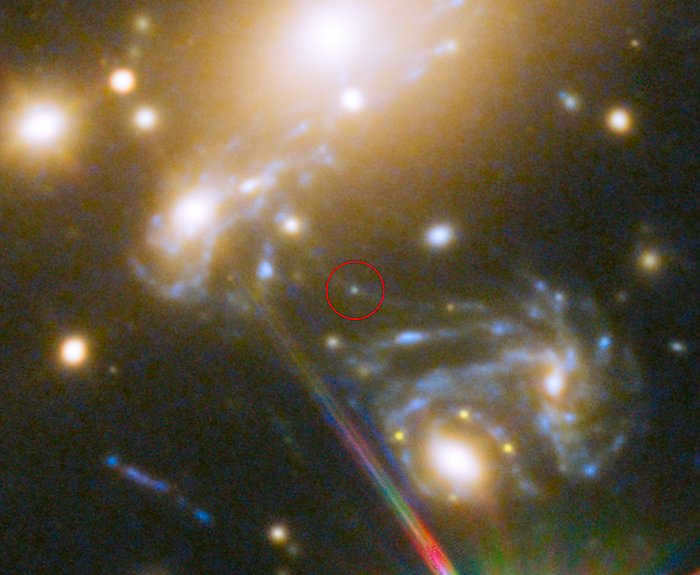
The ability to observe a single source of light from such an immense distance was made possible through a fascinating occurrence known as microlensing within the galaxy. By sheer coincidence, an object, most likely a star of similar mass to our own sun, passed directly in front of the distant star. While this intervening object itself remained unseen, its gravitational pull caused the brightness of the star to intensify significantly. Coupled with the lensing effect of the MACS J1149.5+2223 cluster, this extraordinary event resulted in the remote star’s luminosity increasing by a staggering factor of 2000!
A celestial body called Icarus
The officially designated luminary has been bestowed with the official title MACS J1149.5+2223 LS1 (Lensed Star 1) and its own unique moniker, Icarus. The previous holder of this esteemed distinction, which proudly held the record for being the farthest observable star, is situated a mere one hundred times nearer.
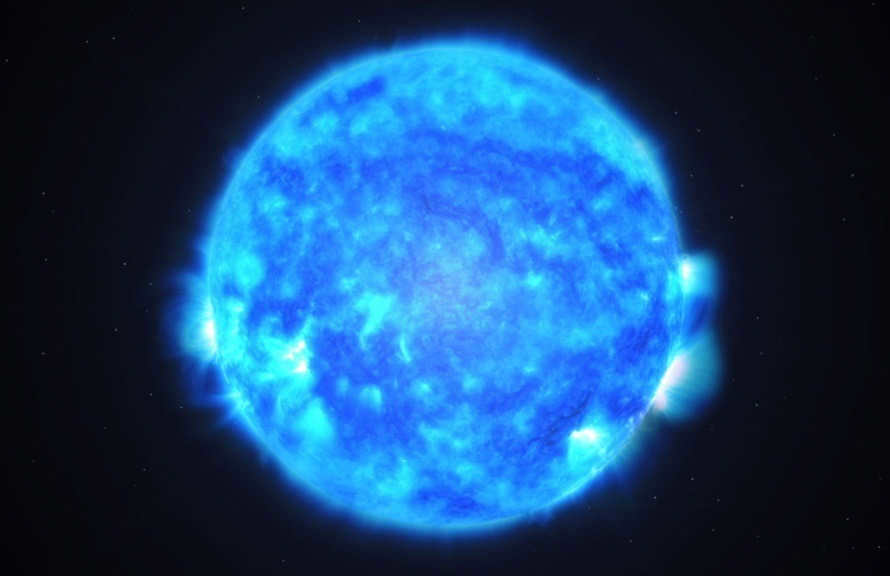
Icarus is an immensely brilliant and scorching celestial object. It is classified as a blue supergiant belonging to the spectral class B. Scientists have managed to ascertain the fundamental properties of this star:
- its mass is at minimum 33 times greater than that of the Sun;
- its luminosity is approximately 850,000 times that of our beloved Sun;
- temperature ranges from 11,000 to 14,000 kelvin;
- metallicity, referring to the abundance of chemical elements heavier than helium, is estimated to be around 0.006 solar units.
The destiny of the farthest star
The occurrence of microlensing that enabled us to observe Icarus happened, as we are already aware, 9.34 billion years in the past. At that period, the Universe was only approximately 4.4 billion years old. The depiction of this star is a form of a small-scale photograph from that ancient era.
Throughout the period when the light emitted over 9 billion years ago traveled the distance to Earth, the cosmological expansion of the Universe pushed the galaxy where the most remote star resided to a distance of 14.4 billion light-years.

Icarus, in accordance with contemporary theories regarding the life cycle of stars, has already vanished, as the lifespan of a star is inversely proportional to its mass. It is plausible that some of Icarus’ matter has been utilized in the formation of new celestial bodies, potentially including their accompanying planets.
Is it possible to witness its return?
Despite the fleeting nature of microlensing events, scientists hold out hope for another sighting of Icarus, and perhaps even a more brilliant one. This is due to the presence of numerous stars in the MACS J1149.5+2223 cluster that are positioned near the line of sight between Icarus and Earth. Any one of these stars has the potential to intersect with the beam and produce a microlensing event. It is also worth noting that this opens up the possibility of observing other distant stars in a similar fashion.
Furthermore, there remains the tantalizing prospect that astronomers may one day be fortunate enough to witness a truly awe-inspiring spectacle – the explosive demise of the most remote star through a supernova event.
Let’s depart from our solar metropolis and embark on a mental journey to the outermost reaches of the Universe.
As mentioned earlier in this tome, the ancients referred to the stars as fixed. In reality, it is the entire sky that revolves around the Earth (as we now understand, this rotation is merely apparent). Each star remains at a constant distance from one another at all times.
Take, for instance, the constellation known as the Big Dipper. The arrangement of its seven stars, as it formed two thousand years ago, remains unchanged to this day and will continue to do so for several thousand more years.
However, the apparent stillness of the stars is deceiving. In reality, they are hurtling through the vastness of space at tremendous speeds. Yet, due to their immense distance from us, we are unable to perceive their movements.
For centuries, astronomers have sought to determine the exact distance between the stars and ourselves, but their efforts have been in vain.
In 1837, V. Ya. Я. Struve, the director of the Pulkovo Observatory, achieved a breakthrough by calculating the distance to the star Begi. This star, it turned out, is approximately 1700 thousand times farther from us than the Sun!
This was a significant milestone. Following Struve’s achievement, scientists subsequently managed to ascertain the distances to numerous other stars.
The star closest to us has been named Proxima, derived from the Latin word for “nearest”. Proxima (located in the constellation Centaurus) is a diminutive star, visible only through a high-powered telescope and exclusively from the southern hemisphere of the Earth.
Let us now calculate the hypothetical speed at which we could travel to Proxima.
What means of transportation shall we employ to reach our destination?
Let us conjure up a fantastical scenario.
Imagine that there exists a railway track leading to Proxima, and the inaugural passenger train is awaiting the signal to depart. You and I, panting with exertion, rush towards the ticket counter.
– Are there any remaining tickets to Proxima?
– Certainly, – the cashier responds in a composed manner.
– Two tickets, please!
– That will be the fare, – says the cashier. – Given the considerable distance, the transportation authority has set a favorable rate for the general public: one ruble for every million kilometers.
– That’s practically free! – We exclaim with delight.
– Hold on a moment! – the cashier smiles. – So, one ruble per million kilometers equates to one hundred and fifty rubles per astronomical unit. Since Proxima is two hundred and sixty thousand astronomical units away, that means… you owe a total of thirty-nine million rubles each, my friends!
We recoil in terror from the cash register.
– And… how long will the journey take?
– I shall calculate that as well, – the cashier reassures us. – We are dispatching an express train that travels at a speed of three hundred kilometers per hour. The journey to the Sun would take fifty-eight years, and Proxima is two hundred and sixty thousand times farther… It will take you fifteen million years to reach your destination, comrades!
– Will there be stations along the way?
– Highly unlikely… Unless a comet happens to pass by.
Here are some suggested articles related to the subject:

Maybe you’ve heard the saying: “When you gaze at the heavens, you’re actually peering into the past. Many of the stars we see in the night sky have long since faded away.” This profound idea helps individuals come to terms with the fact that all things in this world eventually come to an end… However, let’s leave metaphysical questions to the philosophers and delve into this. Is there any validity to this statement?
Light is an incredibly fast entity. However, stars are positioned at significant distances from us.
When traveling through a vacuum, light reaches speeds of nearly 300,000 kilometers per second. Nevertheless, the stars closest to our Sun remain extremely distant. Therefore, it takes years for light from these stars to reach our solar system. The star system Alpha Centauri, which is the closest to us, is approximately 4.25 light-years away. Additionally, the brightest star in our sky, Sirius, is situated at a distance of 8.6 light-years. Consequently, if a hypothetical scenario involved a thousand nuclear warheads being detonated on Sirius, we would only become aware of this event 8.6 years later.
Deneb, located in the constellation Swan, is one of the most distant stars visible to the naked eye, sitting nearly 3,000 light years away from our planet. This implies that when observing this star, the light that reaches us commenced its voyage towards Earth during the early stages of ancient Rome’s rise to power, long before it was even marked on any map. From a human perspective, it may appear that an extensive period of time has elapsed since then. However, in relation to the average lifespan of a billion-year-old star, this timeframe is merely a fleeting moment. Unless an enormous cosmic catastrophe has transpired within the vicinity of Deneb, it remains firmly anchored in its current position.
Several stars visible in the night sky have already ceased to exist
Consider a particular star known as Betelgeuse. It is one of those stars that could potentially undergo a cataclysmic explosion at any given moment. However, due to its distance of 650 light years from Earth, if it were to explode 200 years ago, we would not be aware of this event until another 450 years pass. Moving on to outer space, numerous sizable galaxies can still be observed without the aid of telescopes. The most well-known among them is Andromeda, which is situated approximately two and a half million light years away. This galaxy encompasses a staggering number of stars, ranging between four hundred billion and 1 trillion. Naturally, it is inevitable that some of these stars have already ceased to exist within the past two and a half million years. Nevertheless, the majority of them are likely to still be present, and it is improbable that anything significant has occurred to alter their status.
However, when using a telescope for observations, the perspective is completely transformed.
One can observe objects that are located at much greater distances, even billions of light years away. Considering that stars similar to our Sun typically have a lifespan of approximately 10 billion years, it is possible that many of the stars we observe in the farthest galaxies have already ceased to exist. Nevertheless, it is peculiar to note that even at such vast distances, we cannot definitively determine whether we are observing stars that have already completed their life cycles.
There is an interesting fact to note. In the distant galaxies mentioned, there have been numerous new stars that have formed during the time it takes for their light to reach us, yet we are unable to observe them presently. Additionally, it is highly probable that there are still numerous stars within those galaxies that are alive and thriving. The reason being, smaller stars have significantly longer lifespans compared to larger stars. Red dwarfs, for example, are believed to live anywhere from 200 billion to tens of trillions of years, which far exceeds the estimated lifespan of the Universe. Thus, these stars have an exceptionally long future ahead of them and will remain in their current positions for quite some time.
Observing the past
Furthermore, it’s worth noting that our view of the Sun is always delayed. If you didn’t know this already, the image of the Sun that you see is actually eight minutes old!
Consider a scenario where there exists an incredibly advanced extraterrestrial civilization out in the vastness of space. This civilization is so advanced that it has the ability to observe planets with the same level of detail as our own satellites. Now, imagine a hypothetical extraterrestrial scientist located 3000 light years away who is able to witness the early days of ancient Rome through a powerful telescope! It’s fascinating to think about how astonished this scientist would be upon learning that there are already man-made satellites orbiting this planet. And to realize that the once great Roman empire has long since crumbled into history…
Astronomical Objects
Astronomical objects are celestial entities and vast luminous orbs of plasma. Within our own Milky Way galaxy, there exist billions of these entities, including our very own Sun. It has recently come to light that some of these objects are accompanied by their own planetary systems.
The Evolution of Celestial Observation
In the modern era, it is now possible to acquire a telescope and engage in the observation of the nighttime sky, or alternatively, to utilize online telescopes through our website. Since ancient times, stars have held great significance in numerous cultures. They have been featured prominently in myths and religious narratives, while also serving as the earliest tools of navigation. As a result, the field of astronomy is widely regarded as one of the oldest scientific disciplines. The advent of telescopes and the subsequent discovery of the laws of motion and gravity during the 17th century have provided us with the understanding that all stars bear resemblance to our own Sun and thus are governed by the same fundamental physical principles.
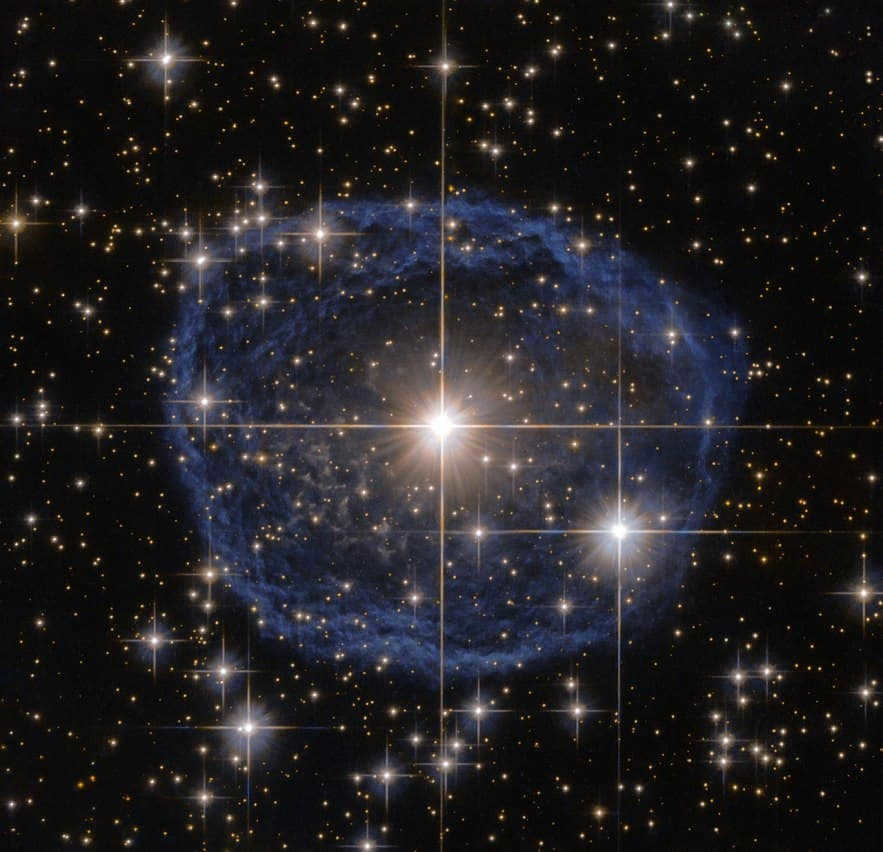
An image capturing the final stages of a star’s life. This remarkable photograph was captured by the Hubble Space Telescope, a groundbreaking instrument that has revolutionized our understanding of the cosmos.
The advent of photography and spectroscopy in the 19th century allowed scientists to delve into the intricate composition and motion of stars, giving birth to the field of astrophysics. The discovery of radio waves led to the creation of the first radio telescope in 1937, enabling the detection of previously invisible stellar radiation. Finally, in 1990, the Hubble Space Telescope was launched, providing humanity with unparalleled views of the universe and offering invaluable insights into its deepest secrets. Visit our website to explore a collection of high-quality Hubble photos showcasing various celestial wonders.
Identifying the Stars in the Universe
Ancient civilizations lacked the technological advancements that we have today, so they attributed celestial objects to various creatures. These groupings, known as constellations, were accompanied by myths to help remember their names. Interestingly, many of these names have endured and are still in use today.
Additionally, there are currently 88 constellations in the modern era, with 12 falling under the category of zodiacal constellations. The brightest star in each constellation is given the designation “alpha,” the second brightest is “beta,” and the third is “gamma.” This naming convention continues throughout the Greek alphabet. Some stars are even associated with specific body parts. For instance, Betelgeuse, the brightest star in the constellation Orion (designated as Orion’s Alpha), is referred to as “the hand (or armpit) of a giant.”
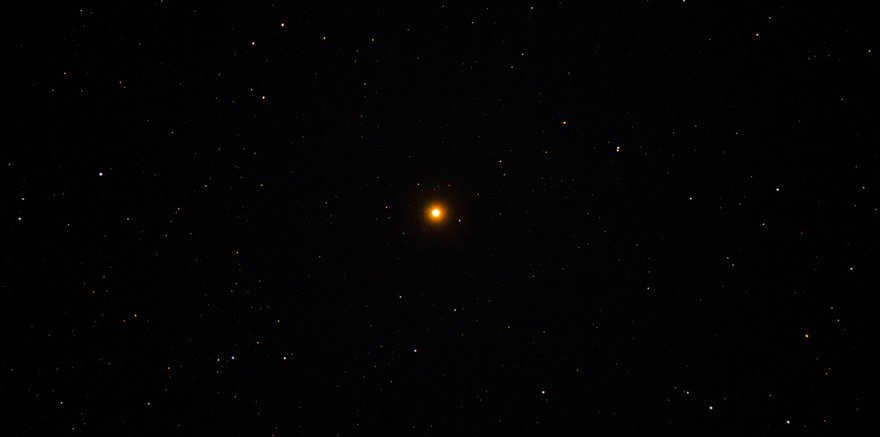
The red supergiant star Betelgeuse is located relatively close to Earth.
It is important to remember that over time, numerous catalogs have been compiled, and their designations are still in use today. For instance, the Henry Draper Catalog provides spectral classification and positions for 272,150 stars. Betelgeuse is designated as HD 39801.
Given the vast number of stars in the sky, new abbreviations are used to denote stellar types or catalogs. For example, PSR J1302-6350 is a pulsar (PSR), using the coordinate system “J2000,” with the final two groups of numbers representing latitude and longitude coordinates.
Are all stars identical? Well, when observed without the aid of technology, they exhibit only minor variations in luminosity. But are they simply enormous masses of gas? Not quite. In reality, stars are categorized based on their primary attributes.
Within this classification, one can encounter blue giants and diminutive brown dwarfs. Occasionally, one may come across peculiar stars, such as neutron stars. It is essential to comprehend these distinctions in order to delve into the mysteries of the Universe. Therefore, let us acquaint ourselves with the various types of stars.
Various Types of Stars Found in the Universe
Before a fully formed star emerges, we observe a protostar. A protostar is essentially a cluster of gas that has collapsed from a molecular cloud. This phase of evolution typically lasts for approximately 100,000 years. As gravity becomes stronger, it compels the formation to collapse. The gas within the protostar is heated up by gravity, which ultimately causes it to release energy.
This critical phase occurs before the protostar transitions into a main sequence star. At this point, the protostar solely derives its energy from gravitational forces that are actively breaking it down. These stars do not possess sufficient heat and pressure to initiate nuclear fusion. Stars like T Taurus may exhibit enormous spots, X-ray bursts, and powerful bursts of wind. This stage can span a duration of 100 million years.
A star of this nature undergoes a state of hydrostatic equilibrium. The gravitational forces compress the object, while nuclear fusion counteracts this by pushing outward. These opposing forces balance each other, allowing the star to maintain its spherical shape. The size of the star depends on its mass, with a minimum threshold of 80 times the mass of Jupiter required to initiate the fusion process. However, in theory, the maximum mass could reach up to 100 times the mass of the sun.
Once the star exhausts all of its internal fuel, it ceases to generate external pressure, thus unable to counterbalance the internal pressure. As a result, the star undergoes a contraction, and the outer layer surrounding its core ignites, prolonging its lifespan but expanding in size. This transformation turns the star into a red giant, which can be up to 100 times bigger than its main sequence counterpart. Eventually, when the star runs out of hydrogen, it starts to burn helium and even heavier elements. This particular phase can last for several hundred million years.
When the fuel is depleted, the star loses its ability to sustain nuclear fusion, resulting in its transformation into a white dwarf. As the external pressure weakens, the star contracts under the force of gravity, causing it to shrink in size. Despite this contraction, the white dwarf continues to emit light due to the presence of high temperatures. However, over time, as it cools down, the white dwarf will eventually reach a background temperature. This cooling process takes hundreds of billions of years, making it currently impossible to observe a fully cooled white dwarf.
This is the most prevalent kind of species. In front of us, we have a low-mass main-sequence star, which causes it to be considerably cooler than the Sun. However, it compensates for this by having a longer lifespan. The reason for this is that they are able to utilize fuel at a slower rate, resulting in significant savings. Observations indicate that these objects can endure for up to 10 trillion years. The smallest examples are only 0.075 times the mass of the Sun, but they can grow to be as much as 50% larger.
When a star has a mass of 1.35-2.1 times that of the sun, it does not end its life as a white dwarf, but instead creates a magnificent supernova explosion that illuminates the sky. Following this explosion, a core remains, which transforms into a neutron star. This celestial object is particularly fascinating as it consists entirely of neutrons. This is due to the intense gravitational force that compresses protons and electrons, causing them to merge and form neutrons. If the star’s mass were even greater, it would collapse into a black hole.
The most massive stars are known as supergiants. They have a mass tens of times greater than that of the sun, but unfortunately, their fate is not as fortunate. The larger the size, the shorter their lifespan. They rapidly deplete their internal fuel in just a few million years. As a result, they have short lives and ultimately meet their end in the form of a supernova.
As you may have noticed, there exist various types of stars. Grasping this concept will aid in comprehending the evolutionary stage of the entity and even discerning its future path.
Brown dwarfs are entities that surpass the size of planets, yet fall short of being classified as stars. Their mass ranges from twice that of Jupiter to 0.08 times the mass of the Sun. They form in a similar fashion to regular stars – from collapsing clouds of gas and dust. However, they lack the necessary temperature and pressure to initiate nuclear fusion. For a significant period, they were considered purely theoretical entities until the initial specimen was discovered in 1995.
Cepheids are a type of star that has successfully undergone the transition from the main sequence to the Cepheid instability band. These stars are commonly known for their pulsating radio waves and the noticeable correlation between their periodicity and luminosity. Scientists highly value Cepheids as they provide valuable insights into determining distances in outer space.
Additionally, Cepheids also exhibit variations in radial velocity that correspond to their photometric curves. The brighter Cepheids tend to have longer periods of variability.
Typically, classical Cepheids are classified as supergiants, with a mass that is 2-3 times greater than that of the Sun. They exist during the stage of fuel burning on the main sequence before transitioning into red giants and crossing the Cepheid instability line.
To be more precise, the concept of a binary star system does not accurately depict the true nature of these celestial objects. In reality, what we observe is a stellar system consisting of two stars orbiting around a common center of mass. It is a common misconception to mistake two closely appearing objects as a binary star system when viewed with the naked eye.
Scientists find these binary stars particularly valuable as they provide valuable data for calculating the individual masses of the stars. By observing their common orbit, Newton’s laws of gravity enable us to accurately determine their masses.
Binary stars can be categorized into several groups based on their visual properties, including eclipsing binary stars, visually binary stars, spectroscopic binary stars, and astrometric binary stars.
Eclipsing binary stars are those whose orbital planes are aligned in such a way that they create a horizontal line when observed from a specific location. This alignment results in the phenomenon of a double eclipse, as exemplified by the famous Algol system.
Visual – a pair of stars that can be distinguished with the help of a telescope. In cases where one star emits a strong light, it may pose a challenge to distinguish the second star.
Formation of Stars
Evolution of Stars
The complete evolutionary trajectory of a star can be determined based on its mass, as it undergoes a series of distinct stages. There exist stars of intermediate mass (such as our Sun) with a mass between 1.5 and 8 times that of the Sun, stars with a mass greater than 8 times that of the Sun, and stars with a mass up to half that of the Sun. Interestingly, the lifespan of a star is inversely proportional to its mass, meaning that higher-mass stars have shorter lifespans. If a star’s mass is less than a tenth of that of the Sun, it falls into the category of brown dwarfs, which are unable to initiate nuclear fusion reactions.
The intermediate-mass entity initiates its existence as a cloud spanning a distance of 100,000 light-years. In order to undergo collapse and transform into a protostar, the temperature must reach 3725°C. Once hydrogen fusion commences, a variable known as T Taurus, characterized by fluctuations in brightness, can take shape. The subsequent collapse process will span a duration of 10 million years. Subsequently, the star’s expansion will be counterbalanced by the compressive force of gravity, resulting in its manifestation as a main-sequence star, powered by hydrogen fusion in its core. The diagram below illustrates all the stages and transformations involved in the process of stellar evolution.
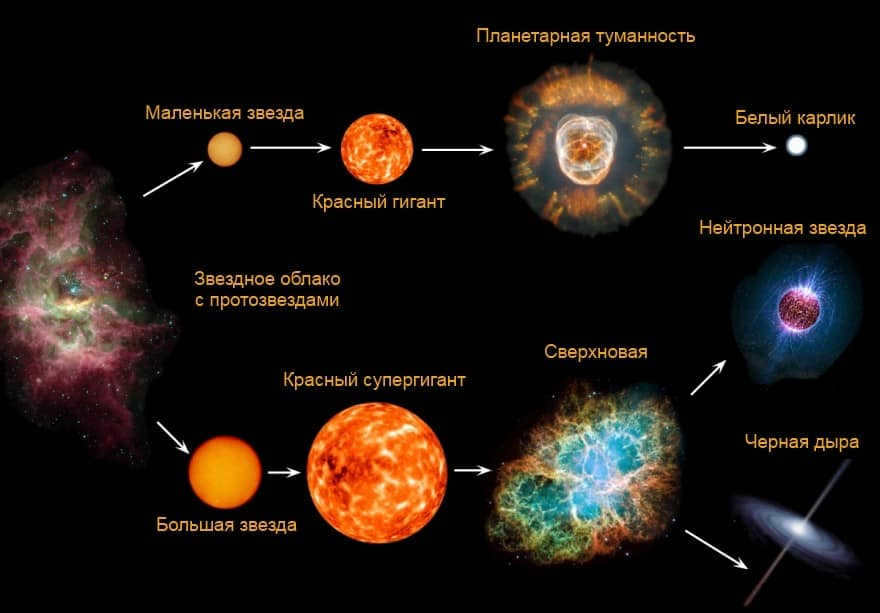
Once all the hydrogen in a star has fused into helium, the force of gravity causes the matter to collapse into the core, initiating a rapid heating process. As a result, the outer layers of the star expand and cool, transforming it into a red giant. As the fusion of helium begins, the core shrinks and becomes hotter, causing the shell to expand. Eventually, the outer layers are expelled, leaving behind a white dwarf composed of carbon and oxygen, with a temperature of 100000 °C. Without any more fuel, the white dwarf gradually cools over billions of years until it becomes a black dwarf, marking the end of its lifespan.
The process of a high-mass star forming and dying happens extremely quickly. It only takes 10,000 to 100,000 years for the star to transition from a protostar. During the main sequence phase, these stars are hot and blue objects, shining 1,000 to a million times brighter than the Sun and being 10 times wider. Following this, a red supergiant is formed and begins fusing carbon into heavier elements, a process that takes approximately 10,000 years. Eventually, an iron core is created, measuring 6,000 km in width, and the nuclear radiation within it can no longer resist the gravitational force.
When the mass of the star reaches 1.4 times that of the Sun, the electron pressure is unable to prevent the collapse of the core. This leads to the formation of a supernova. As the core collapses, the temperature rises to 10 billion degrees Celsius, causing the iron to break down into neutrons and neutrinos. In just a second, the core is compressed to a width of 10 kilometers, and then it explodes in a Type II supernova.
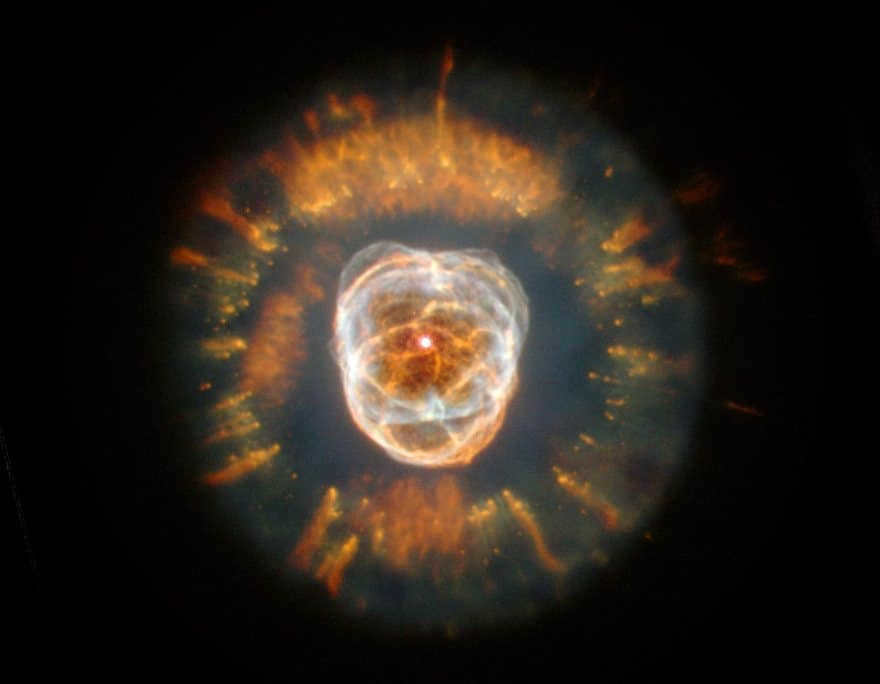
The Eskimo Nebula represents the final phase of a small star’s life cycle.
In the event that the remaining core attains a mass of less than 3 times that of the Sun, it undergoes a transformation into a neutron star, composed predominantly of neutrons. Should it possess rotational momentum and emit radio pulses, it is classified as a pulsar. However, if the core’s mass exceeds 3 times that of the Sun, it will inevitably collapse, resulting in the formation of a black hole.
A low mass star depletes its fuel reserves at such a slow rate that it will take anywhere from 100 billion to 1 trillion years to become a main sequence star. However, considering that the age of the universe is only 13.7 billion years, it is clear that these stars have not reached the end of their life cycle yet. Researchers have discovered that these red dwarfs are only bound to merge with hydrogen, ruling out the possibility of them evolving into red giants. Ultimately, their destiny is to gradually cool down and transition into black dwarfs.
Binary stars
In our solar system, we are accustomed to having one star that illuminates our planet. However, there are other systems where two stars orbit each other in the sky. To be more specific, only one-third of stars that resemble the Sun are solitary, while two-thirds are binary stars. For instance, Proxima Centauri is a component of a multiple system that includes Alpha Centauri A and B. Approximately 30% of the stars in the Milky Way are classified as multiple stars.
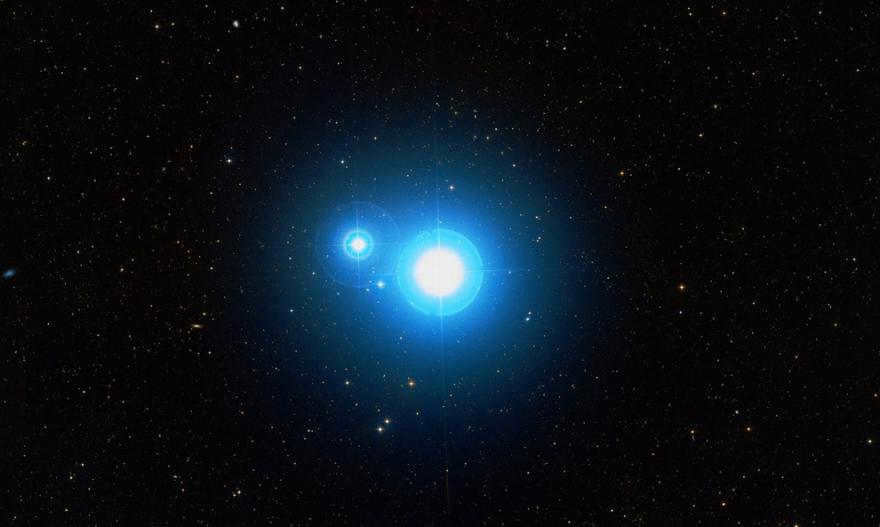
Binary stars in the Ursa Major constellation
This category occurs when two protostars form in close proximity to each other. One of the protostars will eventually become dominant and exert a gravitational pull on the other, resulting in a transfer of mass. If one of the stars evolves into a giant while the other becomes a neutron star or black hole, it can create an X-ray binary system where the material becomes extremely heated – reaching temperatures of up to 555500 °C. In the presence of a white dwarf, the gas from the companion star may undergo a violent eruption. Periodically, the gas accumulates on the surface of the white dwarf and undergoes rapid fusion, resulting in a Type I supernova explosion that can outshine an entire galaxy for months.
Star Characterization
The brightness of celestial bodies known as stars can be described using magnitude and luminosity. The concept of magnitude was first developed by Hipparchus in 125 B.C. He assigned numbers to groups of stars based on their apparent brightness. The brightest stars were classified as first magnitude, and so on up to the sixth magnitude. However, the distance between Earth and a star can affect its apparent brightness. To account for this, astronomers now use a measure called absolute magnitude, which calculates the brightness a star would have if it were located 32.6 light-years away from Earth. The modern magnitude scale extends beyond six and includes negative values (such as Sirius’ apparent magnitude of -1.46). Below, you can find a list of the brightest stars in the sky as observed from Earth.
A compilation of the most brilliant stars that can be observed from our planet
| 0 | Sun | 0.0000158 | −26.72 | 4.8 | G2V | |
| 1 | Sirius (α of the Big Dog) | 8.6 | −1.46 | 1.4 | A1Vm | Southern |
| 2 | Canopus (α of Kiel) | 310 | −0.72 | −5.53 | A9II | South |
| 3 | Toliman (α Centauri) | 4.3 | −0.27 | 4.06 | G2V+K1V | South |
| 4 | Arcturus (α Volopas) | 34 | −0.04 | −0.3 | K1.5IIIp | North |
| 5 | Vega (α Lyra) | 25 | 0.03 (permanent) | 0.6 | A0Va | North |
| 6 | Capella (α Ascendant) | 41 | 0.08 | −0.5 | G6III + G2III | North |
| 7 | Rigel (β Orion) |

However, those of us who are unable to regularly witness such a spectacle fail to recognize that stars appear differently when observed from urban areas with excessive light pollution compared to when viewed in areas with minimal light pollution. The stars’ color and brightness stand out distinctly from the surrounding stars, and each one has its own unique narrative to share.

The Big Dipper or the letter W in Cassiopeia are likely to be easily identifiable to individuals residing in the northern hemisphere, whereas the Southern Cross holds the title of the most renowned constellation in the southern hemisphere. However, it is worth noting that these constellations do not rank among the ten brightest stars!
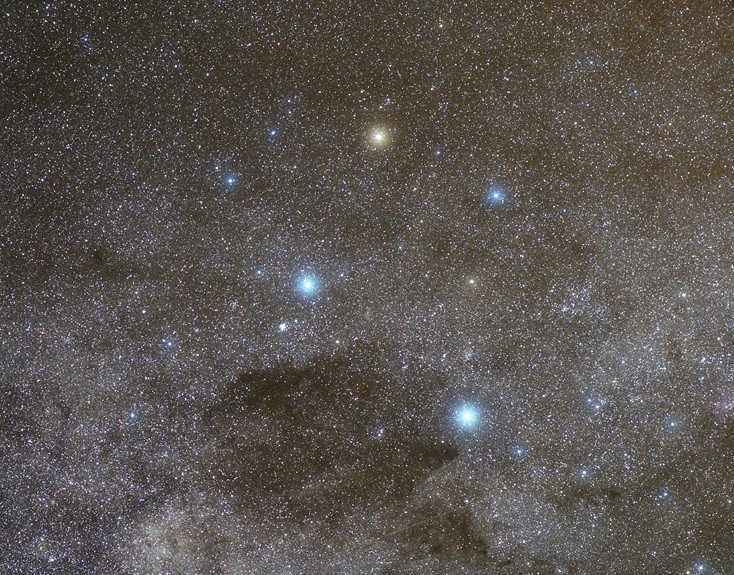
The Southern Cross is a beautiful sight in the Milky Way.
Every star goes through its own life cycle, which is determined by its birth. When a star is born, the dominant element is hydrogen, which is the most abundant element in the entire Universe. The fate of a star is solely dependent on its mass. Stars that have 8% of the mass of the sun are able to initiate a nuclear fusion reaction in their core, converting hydrogen into helium. As they do this, their energy gradually moves from the inside to the outside, radiating out into the Universe. Low-mass stars are red in color, due to their low temperatures, and they burn their fuel slowly. Some of these stars can burn for trillions of years, making them the longest-living stars in the Universe.
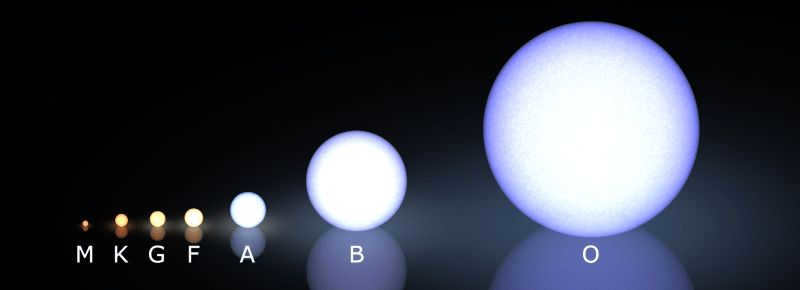
However, as a star accumulates more mass, its core becomes hotter and the area where nuclear fusion takes place expands. When a star reaches the mass of the sun, it becomes a class G star and has a lifespan of less than ten billion years. If the mass doubles, the star becomes a class A star, shining brightly with a blue hue and having a lifespan of less than two billion years. The most massive stars, belonging to classes O and B, only live for a few million years before depleting their hydrogen fuel in their core. It is no surprise that these massive and hot stars are also the brightest. A typical class A star can be 20 times brighter than the Sun, while the most massive stars can be tens of thousands of times brighter!
Regardless of how a star begins its life, the hydrogen fuel in its core will eventually run out.
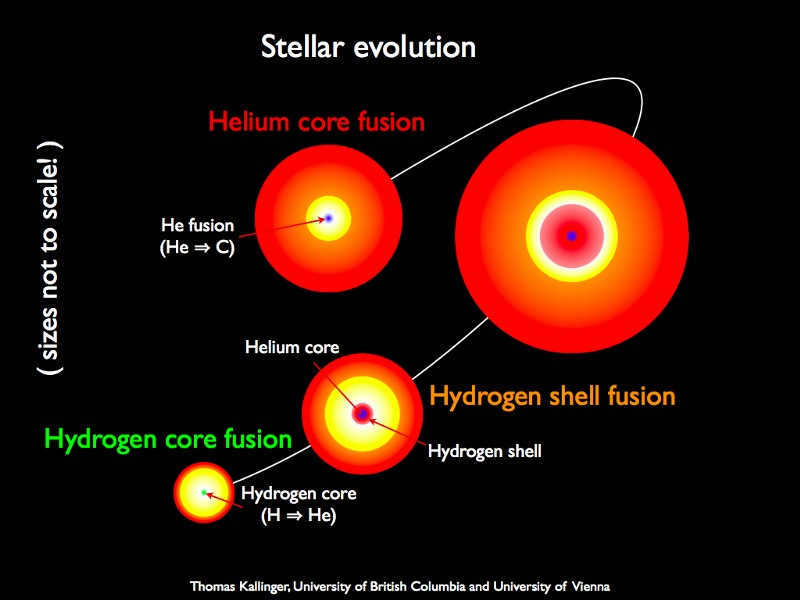
From this moment, the star starts to undergo nuclear fusion of heavier elements, causing it to expand and become a giant star. Although it becomes cooler, it also becomes brighter than its original state. The giant phase is shorter compared to the hydrogen burning phase, but its remarkable luminosity allows it to be visible from much greater distances than the original star.
Considering all of this, let’s now proceed to the ten most brilliant stars in our celestial sphere, listed in ascending order of brightness.

10. Ahernar. Ahernar is an incredibly luminous star, shining with a brilliant blue light. It possesses a mass seven times greater than that of our Sun and is an astonishing 3000 times brighter. What sets Ahernar apart from other celestial bodies is its remarkable rotational speed. It spins at an astonishing rate, making it one of the fastest rotating stars known to humanity. This rapid rotation has caused Ahernar to take on a unique shape, with its equatorial radius being 56% larger than its polar radius. Additionally, the temperature at the star’s pole is significantly higher, reaching a scorching 10,000 K above the core temperature. Despite its celestial magnificence, Ahernar remains quite distant from us, located a staggering 139 light-years away.
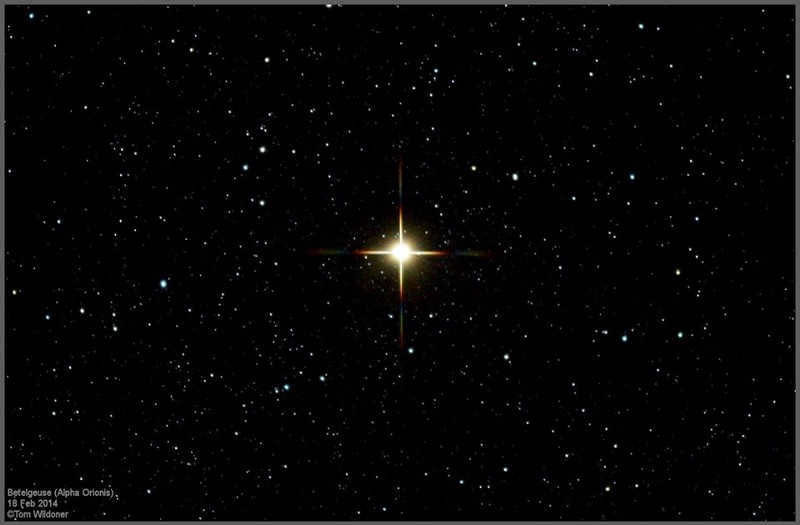
9. Betelgeuse. Betelgeuse, located in the constellation Orion, used to be a hot and bright O-class star. However, it eventually depleted its hydrogen supply and transitioned to helium. Despite its relatively low temperature of 3,500 K, Betelgeuse is still more than 100,000 times brighter than our Sun. This is why it ranks among the top ten brightest stars, even though it is situated 600 light-years away. In the next million years, Betelgeuse is predicted to go supernova, temporarily becoming the most luminous star in the sky. It may even be visible during daylight hours.
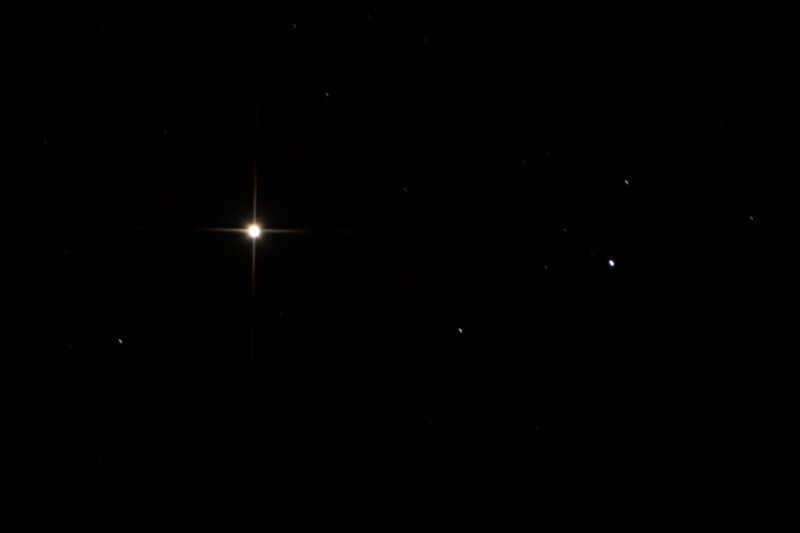
8. Procyon. This star is quite unique compared to the stars we have discussed. Procyon is a modest star of the F-class, slightly larger than the Sun by 40%, and is nearing the end of its hydrogen supply in its core – making it a subgiant in its evolutionary stage. It shines about 7 times brighter than the Sun and is located just 11.5 light-years away, making it potentially brighter than most stars in our sky, with only seven exceptions.
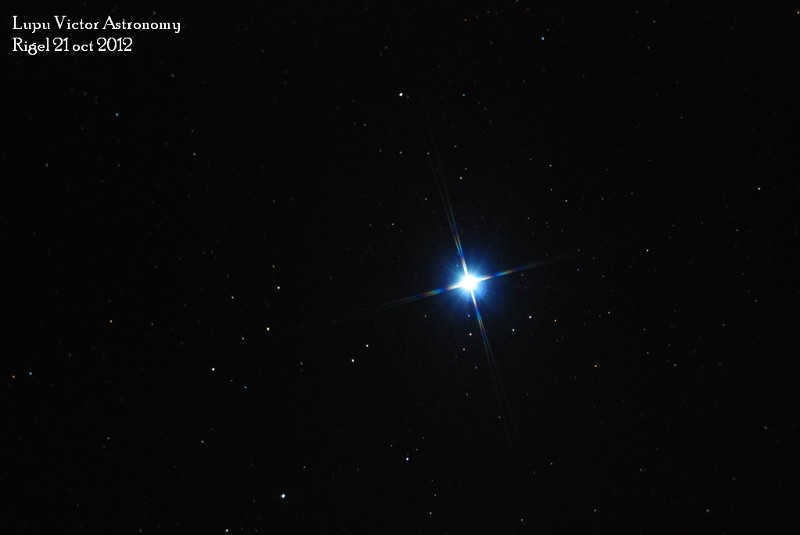
7. Rigel. Betelgeuse does not hold the title for the most luminous star in the Orion constellation – that honor belongs to Rigel, a star that is even farther away. Rigel is situated 860 light-years from Earth and has a temperature of 12,000 degrees Celsius, making it a rare blue supergiant rather than a main-sequence star. Rigel’s brightness is not solely due to its distance from us, but also because of its intrinsic luminosity. In fact, it is 120,000 times brighter than the Sun.
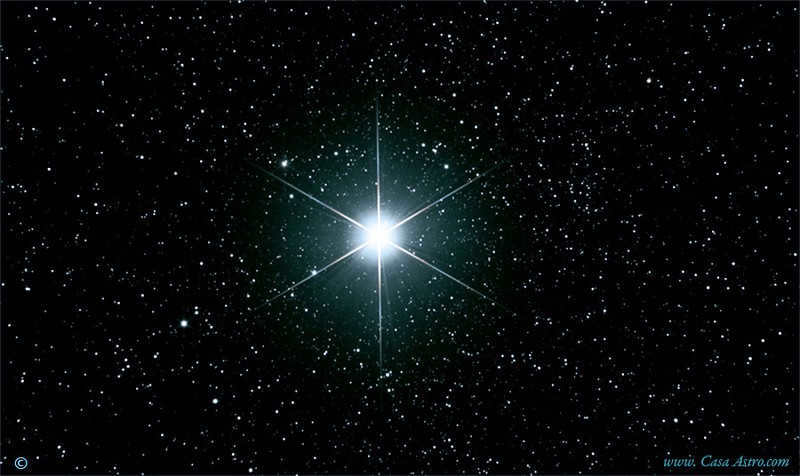
6. Capella. Capella is an unusual celestial body as it consists of two red giants, each with a temperature comparable to that of the Sun, but they are both approximately 78 times brighter than the Sun. Capella’s inclusion on our list is attributed to its remarkable luminosity, relatively close proximity of 42 light years, and the unique presence of two stars.
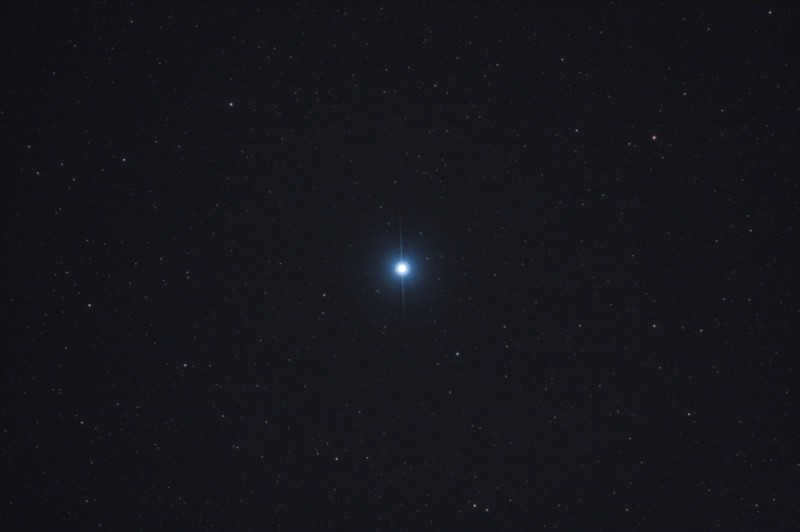
5. Vega. Vega is the most luminous star in the Summer-Fall Triangle and is famous for being the home of the extraterrestrial beings depicted in the movie Contact. Astronomers have designated Vega as a reference point for measuring star brightness, assigning it a “zero magnitude” status. This star is located a mere 25 light-years away from us and is classified as a main-sequence star. Notably, Vega is one of the most brilliant Class A stars in our known universe and is relatively young, with an age of only 400-500 million years. It shines 40 times brighter than our Sun and ranks as the fifth brightest star visible in the night sky. Furthermore, among all the stars in the northern hemisphere, Vega is surpassed in brightness only by one other star…
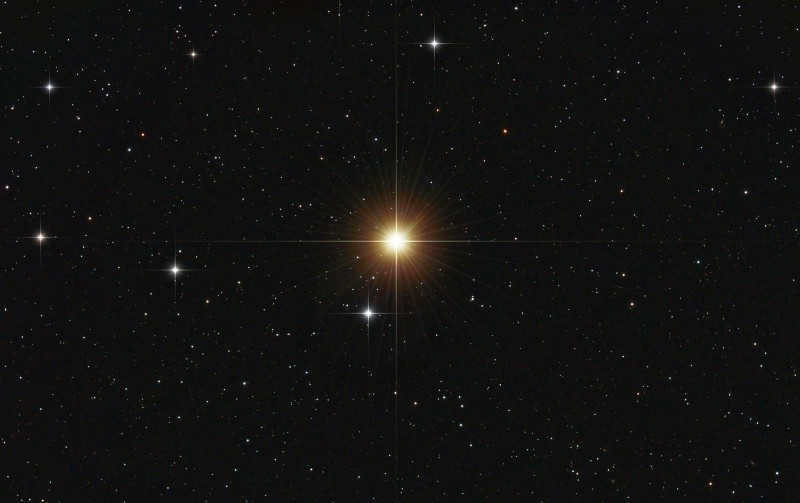
4. Arcturus. . Arcturus is an orange giant that falls between Procyon and Capella on the evolutionary scale. It holds the distinction of being the brightest star in the northern hemisphere and can be easily located by following the “handle” of the Big Dipper. With its brightness being 170 times greater than the Sun, Arcturus has the potential to become even brighter as it continues to evolve. This star is a mere 37 light-years away and is surpassed in brightness by only three stars, all of which can be found in the southern hemisphere.
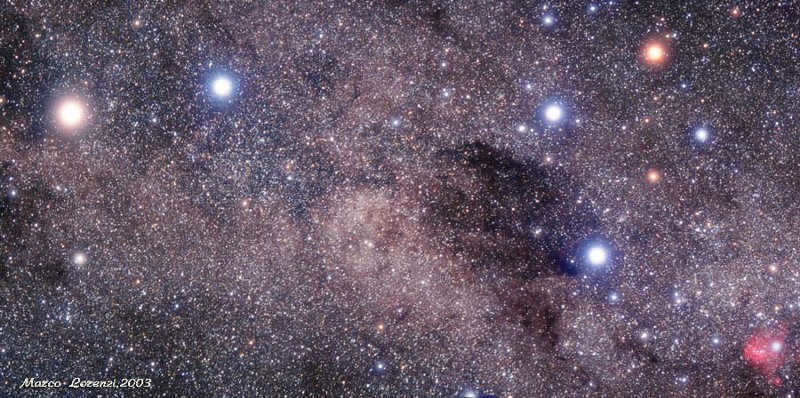
3. Alpha Centauri. The Alpha Centauri system consists of three stars, with the main star being similar to the Sun but dimmer than any other star in the top ten. However, due to its proximity to us – only 4.4 light-years away – the apparent brightness of Alpha Centauri is affected. It is worth noting that this is completely different from the star ranked #2 on the list.
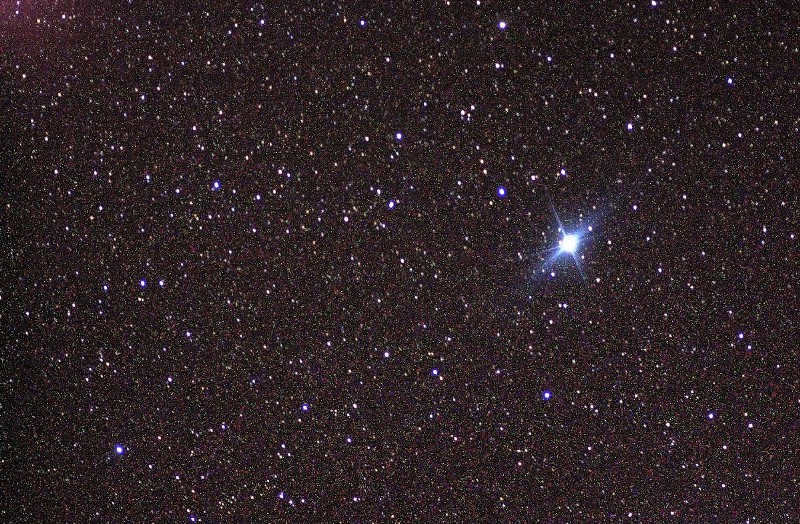
2. Canopus. Canopus, a supergiant star, is distinguished by its white color. It is an astonishing 15,000 times brighter than the Sun and stands as the second-brightest star in the night sky. Despite its distance of 310 light-years away, Canopus continues to captivate with its luminosity. This star is ten times more massive than the Sun and 71 times larger in size. The reason for its incredible brightness can be attributed to these factors. However, Canopus falls short of claiming the number one spot. The title of the brightest star in the sky belongs to another celestial body.
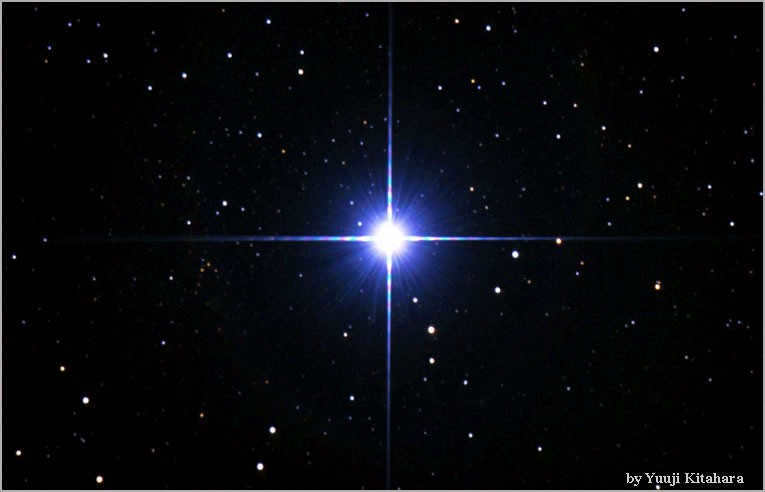
1. Sirius. It has two times the brightness of Canopus, and observers in the northern hemisphere often have the chance to see it rising behind the constellation Orion during the winter. Due to its bright light being able to penetrate the lower atmosphere more effectively than other stars, it frequently twinkles. Despite being only 8.6 light-years away, it is a Class A star that is twice as massive and 25 times brighter than the Sun.
You might find it surprising to learn that the stars at the top of the list are not necessarily the brightest or closest stars, but rather a combination of sufficient brightness and a small enough distance to appear the brightest. Stars that are twice as far away have a brightness that is four times less, which is why Sirius shines brighter than Canopus, and Canopus shines brighter than Alpha Centauri, and so on. Interestingly, the M-class dwarf stars, which account for three out of every four stars in the Universe, are not included on this list at all.
One important lesson to take away from this experience is that sometimes, the things that appear to be the most noticeable and apparent to us are actually the most uncommon. It can be much more challenging to identify the ordinary things, but this means that we should enhance our observation techniques!
To provide an accurate response to this query, it is crucial to understand that the Sun is a star and unequivocally the most brilliant star visible from our planet.
Following the Sun, we have Sirius, also known as the “planet of the dead,” which holds the position of alpha in the constellation of the Big Dog. Sirius is the most enigmatic and brightest star in the night sky. In ancient Egypt, it was referred to as Sothis.
You can effortlessly spot Sirius in the provided image.
The answer to this question is the star known as SIRIUS. SIRIUS is renowned for being the brightest star in the night sky, visible from both the northern and southern hemispheres of the Earth. However, it cannot be seen from the extreme northern regions. In ancient times, SIRIUS was considered a sacred star and was worshipped by people.
Sirius is the name of the brightest star that can be seen from Earth, both in the northern and southern hemispheres. It belongs to the constellation Big Dog. In the winter, it is best observed in the night sky of the northern hemisphere. In the autumn, it can be seen in the morning sky, while in the spring, it appears only in the evening. During the summer in the northern hemisphere, it is not visible, but it can still be admired in the southern hemisphere.
Sirius has an apparent stellar magnitude of -1.46, making it one of the brightest stars in the sky. Its relatively close distance of 8.6 light years contributes to its brightness and visibility.
The Sun, of course, takes the title of the brightest star in the sky. Among the stars visible from the northern hemisphere, Sirius is the brightest. It is the main star of the Big Dog constellation. Following Sirius are two other bright stars: Arcturus, which is the alpha star of the Volopassus constellation, and Vega, the main star of the Lyra constellation. Capella, Rigel, and Procyon are also notable for their brightness and beauty, with Rigel in particular standing out for its striking blue color in the Orion constellation.
Throughout history, humans have been captivated by the allure of stars, leading them to bestow names upon these celestial luminaries and constellations. Among the most brilliant stars in the night sky of the northern hemisphere is Sirius, which scientists believe to be at least 230 million years old.
One of the most prominent stars visible in the night sky is Sirius, known for its association with the Big Dog constellation.
Furthermore, Sirius is considered to be one of the closest stars to our planet.
Estimates suggest that Sirius is between two hundred and three hundred million years old.
Whether in the northern hemisphere or not, I cannot confirm, but a remarkable discovery was made by astronomers back in 2004, when they detected the most massive and luminous star situated at the opposite end of our Galaxy. This particular star, located approximately 45,000 light-years away, boasts an astonishing mass of 150 times that of our Sun and a diameter 200 times larger. It shines with a radiance 40 million times brighter than our Sun. This splendid blue giant is believed to be relatively young, having an estimated age of less than two million years. Surprisingly, despite its immense luminosity, it remains virtually invisible when observed from the Earth’s surface due to a significant portion of its light being absorbed by cosmic dust clouds and the vast distance it resides at. Consequently, its apparent brightness corresponds to a stellar magnitude of 8th. The existence of such a luminary, known as LBV 1806-20, shattered the previously held notion that stars exceeding 120 times the mass of the Sun were an impossibility.
However, if we want to be more precise and identify the brightest star specifically in the northern hemisphere, I would have to say that it is Arcturus. However, it is worth noting that Arcturus is actually not the brightest star overall, as it is surpassed in brightness by Sirius.
Arcturus can be found in the constellation of Volopassus, and locating it in the night sky is relatively easy. One can simply trace an arc through the three stars at the handle of the Big Dipper.
On the other hand, the title of the brightest star in the night sky goes to Sirius. This is mainly because it is relatively close to our solar system, being only 8.6 light-years away. Sirius can be observed from almost anywhere on Earth. In ancient times, it was also referred to as the Dog Star. Sirius ranks as the sixth brightest object in our planet’s sky, with only the Sun, Moon, and the planets Venus, Mars, and Jupiter appearing brighter during their best visibility periods. The approximate age of Sirius is estimated to be around 230 million years.
During the month of January, users on social media platforms began sharing pictures of an exceptionally radiant star visible in the night sky. This sparked recollection of the prediction made by “British scientist” David Meade, who firmly believes that our planet will collide with “planet X” and meet its demise in 2017. Unfortunately, the Earth’s fate has been slightly postponed. The star observed in the southwest is actually Venus.
This particular photo was posted on Instagram the day following Donald Trump’s inauguration by user Igor Gulakov. Captured on a mobile phone, the image showcases a luminous object in the night sky, resembling a star but distinct in terms of its size and intensity of illumination.
Observing the evening sky, I spotted a magnificent and luminous star in the southwest. It reminded me of the famous Christmas star that guided the Magi. Today, an extraordinary leader has emerged, offering hope for peace. It is my prayer that no one like Herod will cause harm to innocent lives or incite unrest and protests.
In the month of January, numerous individuals have taken notice of a remarkable celestial phenomenon. A prominent star has been visible in the southwest after sunset, remaining in the sky until midnight during clear weather conditions.
This celestial body has sparked curiosity among many, prompting questions about its nature and significance.
Last year, the “celebrated British scientist” David Mead made a statement that the Earth would collide with a wandering celestial object known as “Planet X” within a year, and he reiterated his prediction in January. He has been predicting this event for a long time and even wrote a book about it. Supposedly, the Earth is already exhibiting signs of destruction, such as an increase in the frequency of earthquakes. The wealthy have already started constructing bunkers to protect themselves, but it is doubtful that it will be of much help to them.
The topic of the apocalypse has gained significant traction on the 2ch forum.
Knowledgeable users, does anyone know what that star is that has been visible in the sky for the past week, piercing through the city lights? Is something catastrophic about to happen?
There is a blend of fear and humor when it comes to observing the uncommon celestial event. For some, it’s just pure amusement.
To be precise, the luminous celestial body in the southwestern sky is actually our neighboring planet, Venus. During January or March, when the weather is clear, Venus is frequently misidentified as a UFO, a comet, or even the apocalypse. An illustration of this can be seen in the photographs shared by residents of Tver a couple of years ago, who were fortunate enough to have clear skies.
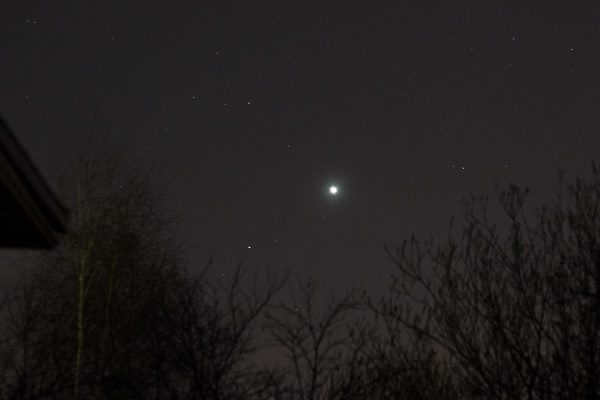
Medialeaks reached out to the Pulkovo Observatory to put an end to any remaining doubts regarding the celestial phenomenon referred to as the “Christmas star” in honor of Trump and the supposed “planet Nibiru.” The spokesperson for the Observatory, Sergei Smirnov, confirmed our worst fears: it is, in fact, Venus – the second planet from the Sun. Its presence in the night sky was unmistakable. It becomes evident that what you are witnessing is Venus and not a UFO or an “asteroid” if you take a closer look at the surrounding celestial bodies.
To the right and below this illuminated spot is Mars. It is further away and smaller in size, but it is also visible to individuals with keen eyesight or who wear properly fitted spectacles. This is a definite indication that the illuminated celestial object is Venus. Currently, the planetary alignment is highly favorable for observation, and Venus will radiate as a luminous beacon throughout the entire month of February. I have high hopes that it will bring blessings not only for our Western New Year, but also for the Eastern New Year according to the Chinese calendar.
In October of last year, the photographs taken by the Cassini spacecraft of Saturn’s pole caused quite a stir. It was discovered that over the course of the past four years, the North Pole of the planet Saturn . Scientists do not possess certainty as to what caused this phenomenon. However, there are hypotheses, and they provide reassurance.
Previously, specifically for those who have a fondness for gas-dust nebulae and the event horizon, in gifs and text.
The nighttime sky is filled with marvelously stunning entities that are visible even without the aid of equipment. If you lack specialized gear to observe the sky, fret not, as some remarkable phenomena can be witnessed without it.
Awe-inspiring comets, radiant planets, far-off nebulae, shimmering stars, and constellations can all be found in the night sky.
The only crucial thing to keep in mind is the light pollution emanating from large cities. In urban areas, the brightness from street lamps and building windows is so intense that it obscures all the most captivating elements in the night sky, necessitating a trip to the countryside to behold these astonishing sights.
Light pollution: rephrased
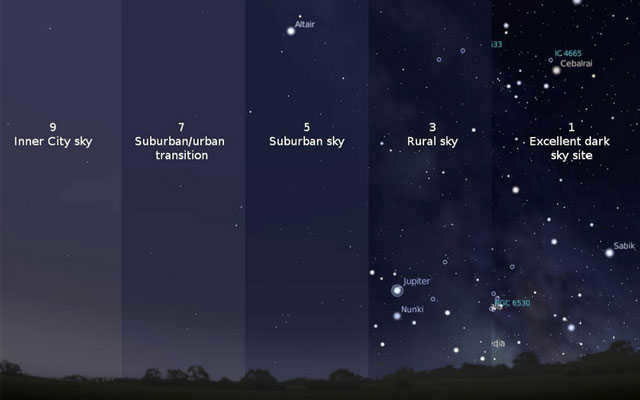
The most luminous planet
Venus, Earth’s scorching hot neighbor, can rightfully lay claim to the title of being the most luminous planet in the celestial sphere. The luminosity of this planet can be attributed to its highly reflective clouds and its close proximity to Earth. Venus shines approximately six times brighter than the other neighboring planets of Earth, namely Mars and Jupiter.

Venus shines brighter than any other celestial body in the night sky, except for the Moon, of course. Its maximum apparent magnitude is approximately -5. In comparison, the full Moon has an apparent magnitude of -13, making it approximately 1600 times brighter than Venus.
In February 2012, a rare alignment of the three most brilliant objects in the nocturnal heavens occurred: Venus, Jupiter, and the Moon. This stunning celestial spectacle could be witnessed shortly after sunset.

Biggest star
The biggest star discovered by scientists is VY Canis Majoris, an M-type red hypergiant located approximately 3,800 light-years away in the Canis Major constellation.
According to estimates, VY Canis Majoris is believed to be more than 2,100 times larger than the Sun. If it were placed in our solar system, its outer edges would extend beyond Saturn’s orbit.
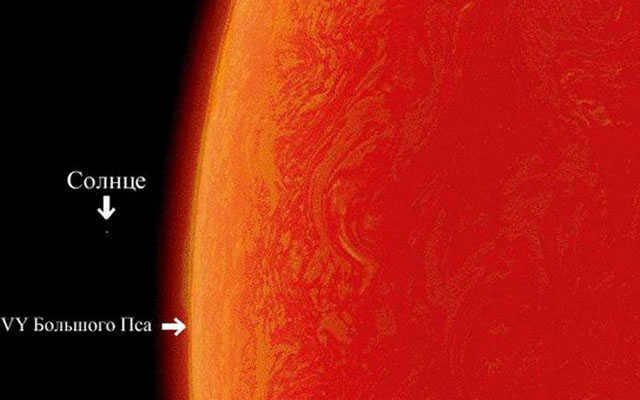
The hypergiant’s visible outline is barely distinguishable due to its density, which is approximately 1,000 times less than that of Earth’s atmosphere at sea level.
VY Big Dog has sparked significant debate in the scientific community due to its size exceeding current stellar theory. Scientists predict that within the next 100,000 years, VY Big Dog will collapse and undergo a hypernova, releasing an unprecedented amount of energy, surpassing that of any other supernova event.
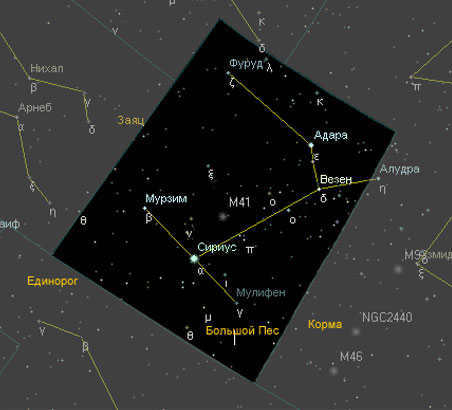
The most brilliant star
In the year 1997, astronomers made a discovery using NASA’s Hubble Space Telescope that the most brilliant star known to mankind is situated at a distance of 25,000 light-years away from our planet. A remarkable fact is that this star is located at a distance of 25,000 light-years. This particular star radiates a luminosity that is 10 million times greater than that of our Sun. Moreover, it is significantly larger in size compared to our very own star. In the hypothetical scenario where this star is positioned at the center of our solar system, it would engulf the orbit of the Earth.
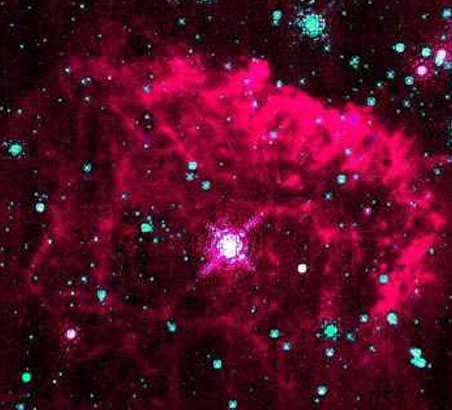
Scientists have proposed that a massive star positioned near the Sagittarius constellation generates a gas cloud surrounding it known as the Pistol Nebula. Consequently, this star is dubbed the Pistol star.
Regrettably, this extraordinary star remains unobservable from our planet as it is concealed by the Milky Way’s dust clouds. Sirius, situated in the Big Dog constellation, is the most luminous star in the night sky. It possesses a stellar magnitude of -1.44.
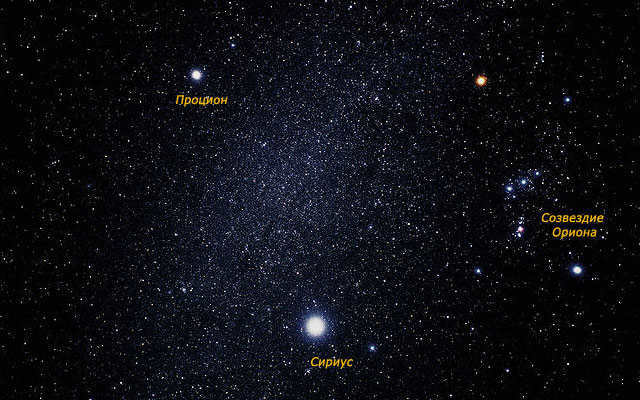
Sirius is observable from any location on Earth, except in the northern regions. The star’s brightness is not only attributed to its high luminosity, but also its relatively close proximity. Sirius is situated approximately 8.6 light years away from the solar system.
The most stunning star in the celestial sphere
Numerous stars are renowned for their brilliance, exhibiting various colors, such as the binary system composed of blue and orange stars Albireo, or the vibrant red giant star Antares. However, the most captivating star visible to the naked eye is the red-orange star Mu Cepheus, also referred to as Herschel’s Garnet Star in tribute to its original investigator, the British astronomer William Herschel.
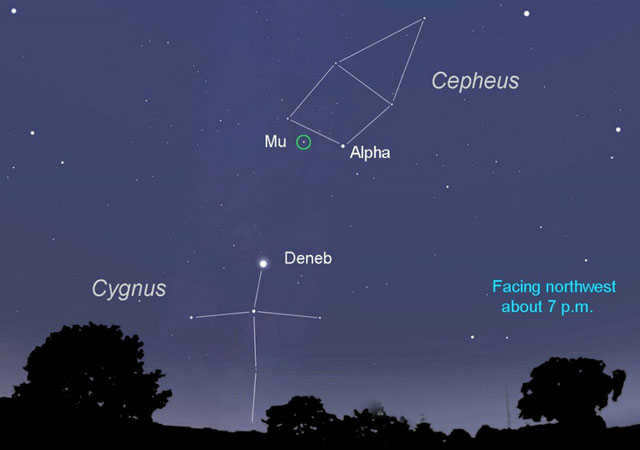
Situated in the constellation Cepheus, the red giant Mu Cepheus is an example of a pulsating variable star, with its maximum luminosity fluctuating between 3.7 and 5.0. The star’s color is also subject to change, typically appearing as a deep orange-red but occasionally adopting a peculiar purple shade.
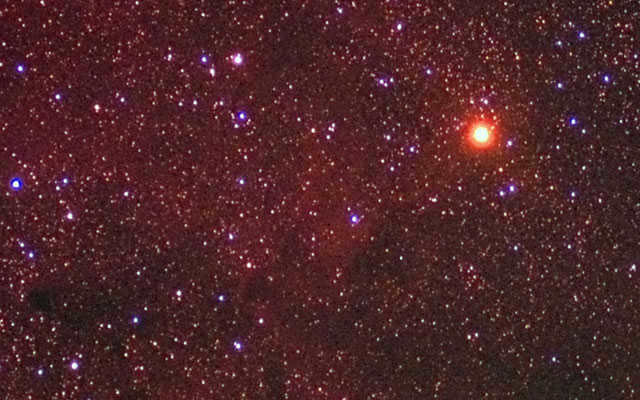
Even though Mu Cepheus may appear dim, its distinctive red color is visible to the naked eye, and with the aid of binoculars, the view becomes even more remarkable.
The most remote celestial body
Visible to the naked eye, the Andromeda galaxy holds the title for being the farthest object in space. Comprised of approximately 400 billion stars, this galaxy was first observed in the 10th century by the ancient Persian astronomer, Al Sufi. He described it as a “small cloud”.

Even with the aid of binoculars or a backyard telescope, the Andromeda galaxy still appears as a slightly stretched-out, blurry speck. Nevertheless, it remains incredibly awe-inspiring, particularly when considering that it takes a staggering 2.5 million years for light to traverse the vast expanse and reach us in a span of 2.5 million years.!
Interestingly, the Andromeda galaxy is presently moving closer to our own Milky Way galaxy. Scientists predict that these two galactic bodies will eventually collide and merge, a process expected to occur approximately 4 billion years in the future. At that point, Andromeda will transform into a luminous disk visible in the night sky. However, it remains uncertain whether there will be any inhabitants on Earth who will still be inclined to gaze at the heavens after such an immense span of time.
In the past, there was a common misconception that Polaris was the brightest star. However, it is actually surpassed by Sirius in terms of its luminosity. Additionally, in urban areas, it can be challenging to locate Polaris due to the bright lights from street lamps.
One cannot discuss bright celestial bodies without mentioning the Sun, which plays a vital role in supporting life on Earth. While it does emit a significant amount of light, it is relatively small and dim compared to the vastness of the universe. If we were to measure its absolute magnitude, it would be around 4.75. This means that if the Sun were 10 parsecs away, it would be difficult to see with the naked eye. There are other stars that are much larger and brighter than our Sun.

Sirius is the most brilliant star that can be observed from our planet. It is visible from almost all locations on Earth, but it is particularly prominent in the northern hemisphere during the winter season. Since ancient times, people have held Sirius in high regard. For instance, the Egyptians relied on this star to determine the start of the Nile River’s overflow and the beginning of the sowing season. The Greeks associated the appearance of Sirius with the approach of the hottest days of the year. Navigators also considered Sirius to be of great importance, as it helped them navigate the vast expanses of the sea. To locate Sirius in the night sky, one simply needs to mentally draw a line connecting the three stars of Orion’s belt. One end of the line will lead to Aldebaran, while the other end will point to Sirius, which captivates observers with its exceptionally bright radiance.
This celestial body, situated within the constellation known as Canis Major, is a binary star. It lies a mere eight light years away from our planet. This stellar entity is composed of Sirius A, which is both brilliant and expansive, and Sirius B, a compact white dwarf. The presence of these two components confirms that this star is indeed a binary system.
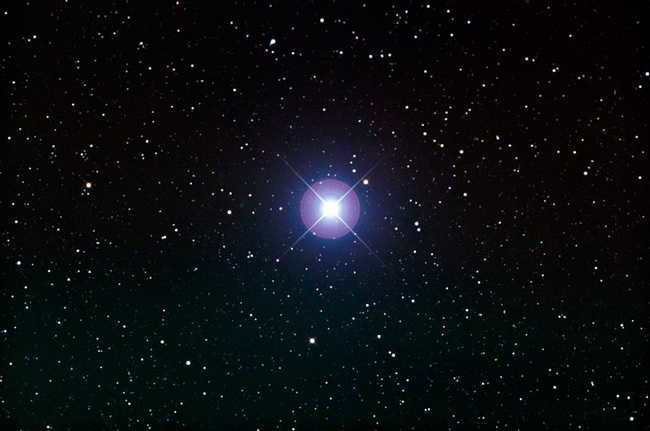
Although not as well-known as Sirius, this star ranks second in terms of brightness. Observing this star from our country (or most of the northern hemisphere) is nearly impossible. However, in the southern hemisphere, Canopus serves as a guiding star for navigators, providing orientation. During the Soviet era, Canopus was the primary star used for astrocorrection, with Sirius serving as a secondary option.

Without the aid of specialized instruments, it is impossible to observe this particular star situated in the Tarantula Nebula. Its distance from Earth, which spans a staggering 165,000 light years, renders it invisible to the naked eye. Nevertheless, it stands as the most luminous and one of the largest stars known to exist within our vast universe. This star outshines the Sun by a factor of 9,000,000 and dwarfs it in size by a factor of 10,000,000. Classified as a blue giant, this star falls within the category of rare celestial bodies. Due to their scarcity, these stars pique the genuine interest of scientists. Researchers are particularly intrigued by the fate that awaits this star after its demise and have undertaken various modeling endeavors to explore different possibilities.
